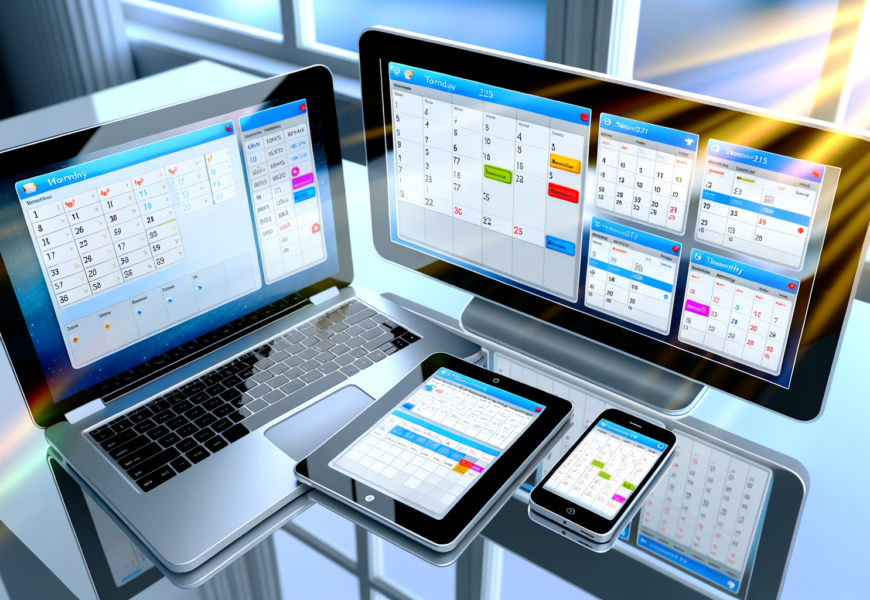Meta Description
Unlock the full potential of your productivity by mastering calendar integration. Learn how to efficiently manage your schedule using the best tools and practices.
In today's fast-paced world, staying organized is more crucial than ever. Calendar integration is a powerful tool that can help you manage your day-to-day activities efficiently by merging various schedules into one unified system. Whether you're juggling professional meetings, personal commitments, or social events, calendar integration simplifies the chaos and keeps you on track. In this guide, we'll explore the benefits, tools, and best practices of calendar integration to help you make the most of your time.
The Importance of Calendar Integration
Calendar integration allows you to streamline multiple schedules into one cohesive view, significantly enhancing your productivity. Imagine the convenience of glancing at your calendar and seeing all of your professional, personal, and social commitments in one place.
- Streamlined Schedules: Integrating your calendars offers a centralized view of all your engagements. No more toggling between different apps or missing appointments.
- Enhanced Productivity: Centralized information allows you to allocate your time more effectively, helping you to prioritize tasks and reduce downtime.
- Avoid Double-Booking: Integration minimizes the risk of scheduling conflicts. With all your appointments and meetings synced, double-booking becomes a thing of the past.
- Comprehensive Overview: Gain a bird’s eye view of your weekly and monthly commitments, making it easier to plan ahead.
Best Tools for Calendar Integration
Choosing the right tool can make a world of difference in your calendar integration journey. Here are some of the best tools available:
- Google Calendar: Known for its seamless integration with Gmail and other Google services, making it an ideal choice for many users.
- Microsoft Outlook: Perfect for professional use, offering advanced scheduling features that make managing corporate meetings a breeze.
- Apple Calendar: Best suited for those within the Apple ecosystem, providing smooth synchronization across all Apple devices.
- Third-Party Apps: Tools like Fantastical and Calendly bring additional functionalities, such as natural language processing and automated appointment scheduling.
Setting Up Your Integrated Calendar
Setting up your integrated calendar involves several steps that require careful consideration to get the most out of your chosen tool.
- Choosing the Right Tool: The first step is to choose a calendar app that best fits your needs and ecosystem. For example, if you're a heavy Google user, Google Calendar might be your best bet.
- Syncing Different Calendars: Combine work, personal, and social calendars for a unified view of your schedule. Most calendar apps offer straightforward methods to sync various calendars.
- Customizing Notifications: Tailor notifications and reminders to suit your needs, ensuring you never miss an important appointment.
- Importing Events: Import existing events from other platforms to streamline all your commitments into a single calendar.
Best Practices for Effective Calendar Management
Once your calendar integration is set up, following best practices can help you manage your schedule more effectively.
- Time Blocking: Allocate specific time blocks for tasks, meetings, and personal time. This not only improves productivity but also helps in maintaining a work-life balance.
- Regular Updates: Keep your calendar updated regularly to reflect any changes. An outdated calendar can lead to missed opportunities or conflicts.
- Color-Coding: Use different colors for different types of events to easily distinguish between work, personal, and social commitments.
- Recurring Reminders: Set up recurring reminders for regular tasks and deadlines. This ensures you stay on top of your responsibilities without constant manual updates.
Troubleshooting Common Calendar Integration Issues
Despite the many benefits, you might encounter a few hiccups along the way. Here’s how to tackle some common issues:
- Sync Errors: Resolving sync errors between different platforms can often be achieved by checking your settings and ensuring all permissions are correctly configured.
- Conflicting Events: Managing conflicting events requires prioritizing tasks and sometimes renegotiating schedules.
- Data Privacy: Ensure your calendar data remains private, especially when sharing calendars with others. Use calendar tools that provide robust security features.
- Compatibility Issues: Overcoming compatibility issues includes choosing tools that support cross-platform synchronization and regularly updating your apps.
Conclusion
Calendar integration is an invaluable strategy for maintaining an organized and efficient schedule. By leveraging the right tools and following best practices, you can ensure that all your commitments are seamlessly managed in one place. Take control of your time today by optimizing your calendar integration process. Start integrating your calendars now and experience the benefits of a more organized life.
Call to Action
Ready to streamline your schedule and boost your productivity? Start integrating your calendars today and unlock the full potential of efficient time management. Share your favorite calendar integration tools and tips in the comments below!
By embracing calendar integration, you can transform chaos into order and make the most out of every day. So, why wait? Dive into the world of calendar integration and take the first step towards a more organized, efficient, and productive life.



